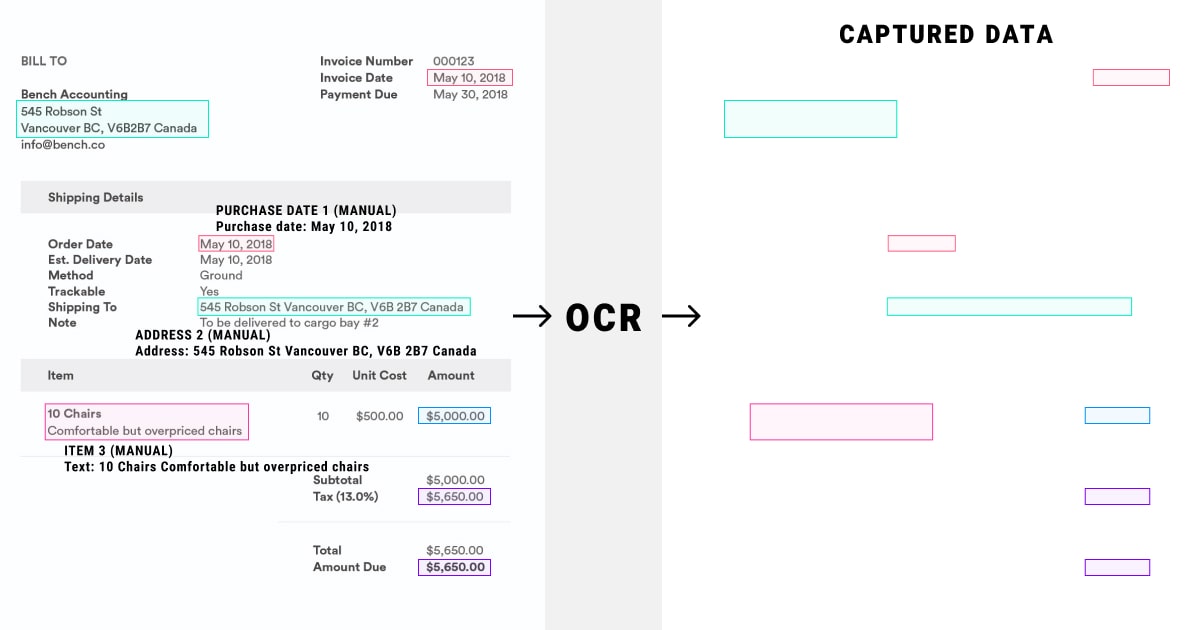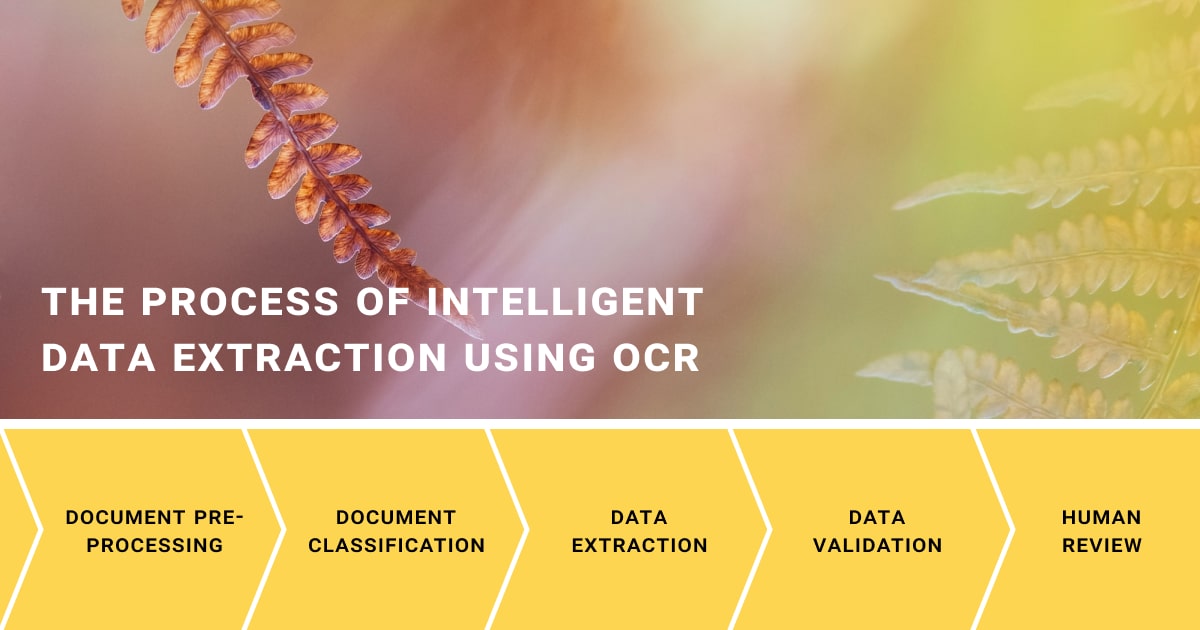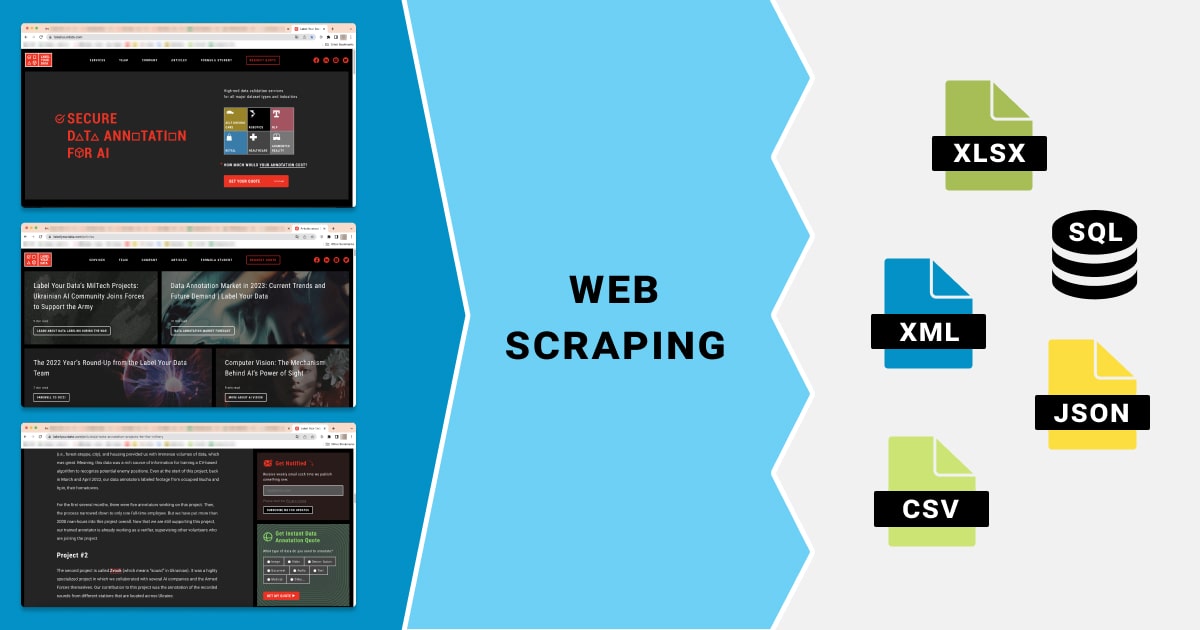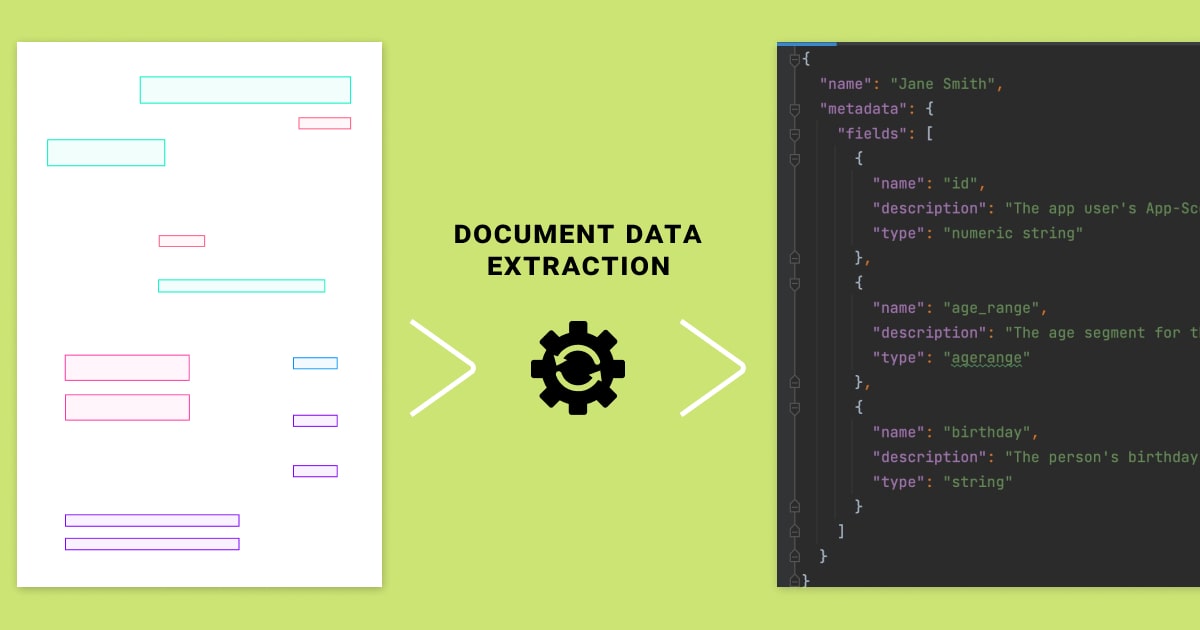OCR Data Extraction: How to Use Computer Vision for Intelligent Data Extraction

TL;DR
- Most companies still depend on scanned documents, so OCR becomes the fastest way to turn messy images and handwriting into usable data that replaces manual entry and cuts processing time.
- Modern OCR pipelines use computer vision and NLP to extract text, tables, figures, and key value pairs even from low quality scans, giving teams structured data they can trust for automation.
- The workflow relies on pre-processing, document classification, character detection, validation, and human review which keeps accuracy high and allows businesses to scale document handling without slowing down.
How Does OCR Data Extraction Work?
Your productivity drops when you deal with large volumes of documentation, and 46% of employees lose time on inefficient paper tasks. This pushes companies to look for better ways to avoid paperwork overload. Many now use intelligent data extraction to streamline document handling and pull useful information from scanned images and other text sources.
Big players like Amazon and Google are developing AI tools powered by computer vision and NLP to support this shift. Recent progress in handwritten text recognition with OCR shows how deep learning has changed the way data is extracted and processed, making document data extraction a practical task for modern businesses.

93% of businesses report having trouble locating papers and information. And while there used to be a lot of handwritten documentation to manage key business activities, digital documents have successfully replaced it thanks to OCR data extraction.
Data extraction relies on automated solutions to turn unstructured data into a format that humans can easily process. When working with scanned documents, there are several types of data that can be extracted.
Types of Data for OCR and Data Extraction
First, it’s the text data itself. Extracting text from scanned documents is arguably the most pivotal task in this process. Although it may appear simple, this technique is quite challenging since scanned papers are frequently displayed in a visual format. The type of text, the complexity of the handwriting, and the quality of the scanned document also add to the difficulty of OCR data extraction. But in the end, we are able to convert image data into text data, which can be used for further analysis and various applications across industries.
Second come the tables and figures. Because tables are great for structuring information and are easy to understand, they are the most often used method for data storage. OCR, however, is not the only technology needed to properly extract tables. Aside from the text, there’s also visual data in tables, such as lines and other elements. This is when computer vision comes in handy, as it helps structure this data for further processing and achieve high precision in table data extraction.
Retrieving data from figures on a scanned page, however, is no less important. It’s the third type of data in this process. For example, pie charts or bar charts typically bear critical information for the scanned document. To partly extract data from images like barcodes or QR codes, a decent data extraction method should be able to infer information from the legends and numbers in a pie chart.
The third type of data one can deal with in data extraction is a name-value pair, aka key-value pairs (KVPs). We frequently use this alternate format to store data in documents. KVPS represent two different values at the same time. For example, color is the “key” and purple is the “value.” In contrast to tabular representations, KVPs frequently exist in illegible formats. Sometimes, they can be even partially handwritten. Therefore, identifying the underlying structures to automatically accomplish KVP data extraction is continuous research.
Data Extraction Technologies
The process of obtaining information from a source (i.e., documents, files, databases, or websites) is called data extraction. You can carry out the process manually or automatically. More specifically, this task requires locating certain pieces of data from a digital document.
Say you have an ID card scan or an invoice, and you need to retrieve some information from it in digital format. OCR provides a required set of tools to recognize printed or handwritten text in a scanned identity document. But before carrying out data extraction, one needs to retrieve the digital data. OCR helps here by processing the pixels in the ID card and converting them into digital format. After that, data extraction locates the labels, like name or date of birth, and seizes the information adjacent to or below it.
For businesses handling both digital and physical documents, OCR streamlines data extraction while tools to print card online make producing professional physical copies just as easy.
At this step, you’re probably wondering whether it’s always necessary to use OCR for data extraction. In some cases, using OCR for this process is not necessary. Such documents can simply go through the data extraction process. For instance, it can be a PDF file. Because it was created from a digital file, it already includes the digital text layer. Therefore, the textual data for OCR is already accessible, and it is not essential to utilize it.
But for most cases, intelligent data extraction relies on two crucial processes in deep learning, such as Optical Character Recognition (OCR) and Natural Language Processing (NLP):
- OCR
Data extraction using OCR is essentially the process of turning images of text into machine-readable format (i.e., machine-encoded text). However, OCR extraction goes hand-in-hand with other methods, such as computer vision and AI image recognition. For example, box and line detection extract tables and KVPs.
- NLP
Natural language processing is responsible for analyzing the meaning of the converted text. The fundamental advances underlying the data-extraction pipeline are closely related to the developments in deep learning. They made significant contributions to the CV and NLP sectors.
OCR can locate letters, numbers, and other characters within an image’s pixels, regardless of the format. Yet, don’t confuse this technology with ICR (Intelligent Character Recognition), which works with handwritten text only. The pixels that resemble letters and words are recognized by OCR, which then uses those pixels to generate digital words and characters. This is how optical character recognition and data extraction complement one another.
Therefore, the information from the documents is scanned into IT systems for further examination thanks to OCR with deep learning. Such systems can identify pertinent concepts in the generated text, while NLP enhances this process. All in all, intelligent OCR technology benefits machine learning analytics necessary for the items’ acceptance or refusal.
The Processes Behind Intelligent Data Extraction with OCR

Now that we have covered the key points, it’s time to comprehend the relationship between OCR and data extraction.
OCR enables computer software to decipher the text on a scanned document. When this technology is used to automate the data entry activities for corporate applications, it's referred to as OCR data capture. These enterprise systems include interfaces for document recognition, scanning, data verification, and export. In addition, automation with an OCR algorithm covers workflow management and offers monitoring capabilities for keeping track of huge amounts of data and documents.
The usual OCR data capture workflow, including both OCR and data extraction, is often known as the process of transforming a document to live data that is ready to use. This process consists of the following phases:
- Identifying metadata: Choosing appropriate data to extract is challenging if the source system is poorly documented. By using automated metadata management, you can import it, which is the first step to addressing the issue. After that, it can be annotated, and you can create an extraction plan separate from the transaction processing program.
- Document pre-processing: At this stage, the main focus is on the quality of the scanned image. Here, the OCR engine automatically checks for and corrects mistakes.
- Document classification: Now, it’s important to identify the format of the scanned document (i.e., JPG, PNG, PDF, TIFF, etc.), and its structure (structured, semi-structured, or unstructured).
- Character Identification: The document should now be divided into sections, subsections, tables, or zones. Once they have been separated, the critical characters or identifiers are found.
- Data validation: By finding errors in the extracted data, it is possible to increase the accuracy of data extraction and identify any problems that need to be fixed.
- Human-in-the-loop in ML: Any flagged documents should be examined for the most precise data extraction model. The software pushes the extracted and cleaned data to the OCR database or exports it in a variety of formats after that. IDP processes may also be used to transform documents into JSON, XML, PDF, and other forms.
Businesses heavily rely on OCR and data extraction because it gives them a method to access data that is kept in a variety of forms. By extracting it, companies may utilize this data for a number of purposes, including marketing, research, and decision-making.
Besides, data extraction brings automation to their core business activities, thus boosting productivity and informed decision-making. For automatic extraction, you can choose an OCR data extraction software.
Top 3 Examples of Data Extraction

There are various instances of data extraction, but a few typical ones are OCR data extraction from databases, data extraction from web pages, and data extraction from documents.
- Web scraping
The method of obtaining data from web pages and other data sources. Pricing, product, and contact details can be collected through this process. Web scraping is one of the most efficient strategies you can employ in your company to develop a data-driven mindset.
- Data mining
Important information is extracted from large databases as part of data mining. Data mining is a crucial process since it enables companies to make far better selections and take their relationships with the clients to the next level.
- Data warehousing
A form of database called data warehousing is used to store data from several sources. Data warehouses play a pivotal role because they enable firms to compile data from many sources and store it in one location. As a result, sharing data with other applications is made simpler.
Final Words

Over half of the processing time and costs are saved by intelligent data extraction. If you want to streamline your document processing procedures, automation will do for you.
Businesses may take the right first step toward building an enhanced data management strategy thanks to OCR data extraction. It also boosts automation process for your company. Additionally, machine learning makes it possible for intelligent data capture software to train itself to distinguish between various data kinds and classify data, speeding and improving the process over time.
If you wish to test your strengths in creating your own OCR model for data extraction, use professionally annotated data for model training. Reach out to Label Your Data to see the solutions we have for your OCR model and data extraction task.
About Label Your Data
If you choose to delegate OCR annotation, run a free data pilot with Label Your Data. Our outsourcing strategy has helped many companies scale their ML projects. Here’s why:
Check our performance based on a free trial
Pay per labeled object or per annotation hour
Working with every annotation tool, even your custom tools
Work with a data-certified vendor: PCI DSS Level 1, ISO:2700, GDPR, CCPA
FAQ
What is the best OCR method for data extraction?
A good method of performing data extraction using OCR is to encode text from a scanned image into machine-readable format. OCR is frequently used in combination with computer vision techniques like box and line detection. Presently, some of the best OCR service providers are Google API and Deep Reader.
How do I extract data from a document?
To extract meaningful data from a handwritten or scanned document, you deal with pre-processing first. After that, classify the type of document you are working with. Then, perform data extraction using OCR to convert text and other elements into a machine-readable format. Don’t skip the data validation stage and human review.
How to work with an OCR engine?
An OCR engine functions by using templates it has for various fonts and text picture patterns. The OCR program compares text images to its internal database using pattern-matching algorithms. The process is referred to as optical word recognition if it matches the text word for word.
Written by
Karyna is the CEO of Label Your Data, a company specializing in data labeling solutions for machine learning projects. With a strong background in machine learning, she frequently collaborates with editors to share her expertise through articles, whitepapers, and presentations.

